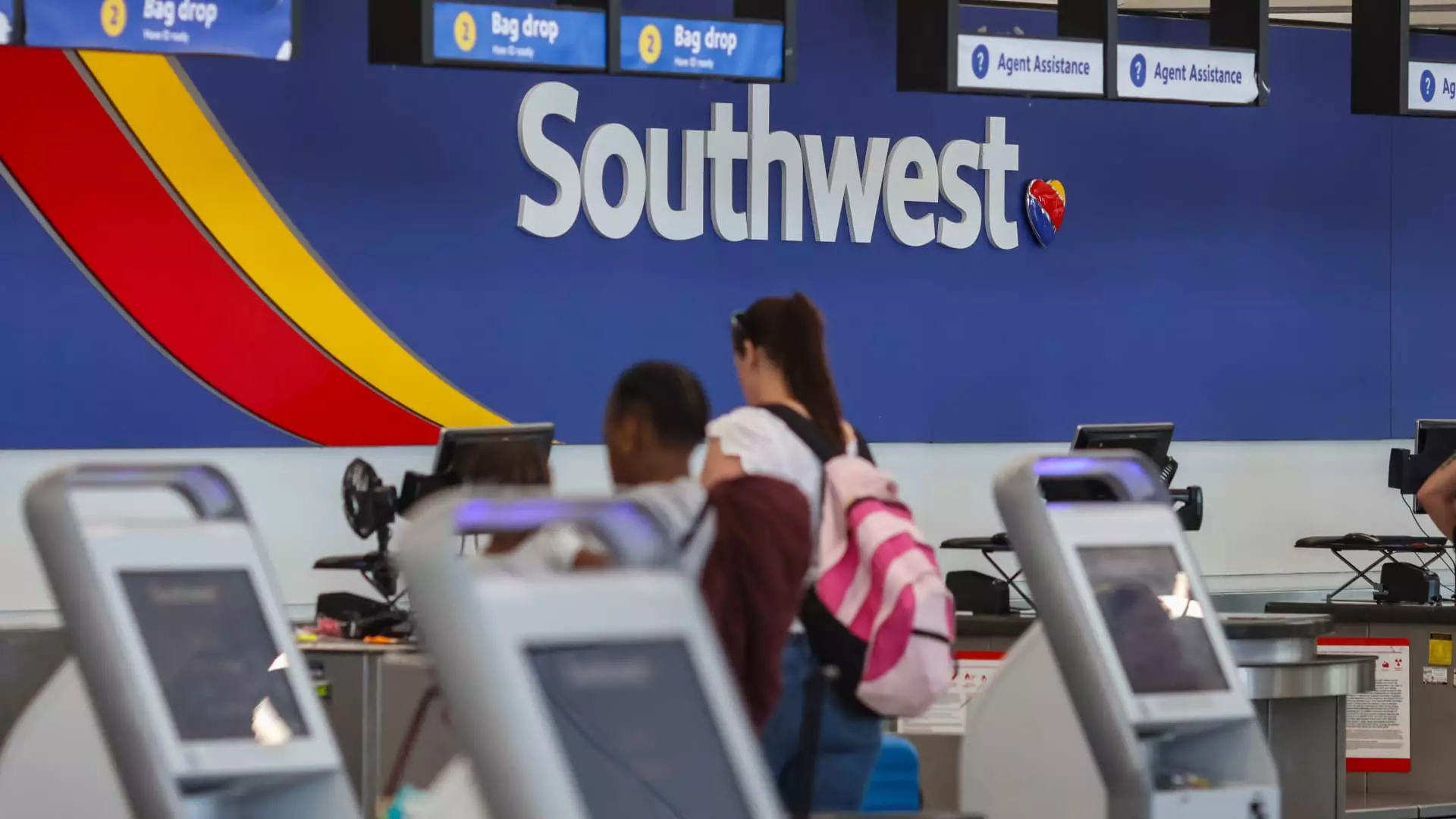In a significant move driven by financial necessity, Southwest Airlines is poised to reduce its operations in Atlanta starting next year. This adjustment involves laying off a substantial number of staff, specifically targeting over 300 positions related to pilots and flight attendants, as detailed in an internal memo obtained by CNBC. The announcement comes just a day before an investor meeting where the airline’s executives plan to unveil strategies aimed at cost-cutting and revenue enhancement. Such efforts are in response to mounting pressure from activist investors, notably Elliott Investment Management, who are pushing for more efficient operational practices.
Despite the looming changes, Southwest assures personnel that it will not be closing its crew base in Atlanta, although it will be reshuffling resources by significantly reducing its workforce in the area. Roughly 200 flight attendants and 140 pilots will be affected during the April 2025 scheduling bid. Crucially, the airline emphasizes that this initiative does not involve layoffs; instead, affected employees may need to bid for positions in other locations, which could lead to job relocations.
Reducing Atlanta Operations
The operational adjustments in Atlanta are extensive. Southwest will cut down its gate access from 18 to just 11, and the number of cities served from this major hub will drop to 21 from 37. Given that Atlanta is renowned as the busiest airport globally and serves as the primary hub for competitor Delta Airlines, these reductions signal a noteworthy shift in Southwest’s strategic focus. The internal memo reflects a hard truth: the airline must address operational losses to restore profitability, reinforcing the notion that tough decisions are sometimes unavoidable in the competitive aviation landscape.
This latest news coincides with broader market conditions that have compelled Southwest to rethink its operational footprint. The airline acknowledges that changes in travel patterns and a saturation of service in certain parts of the United States necessitate a reevaluation of its business model. As the airline has previously withdrawn service from less profitable routes during the pandemic, it appears that Atlanta is the next target for service optimization.
Amid these drastic cuts, Southwest has announced plans to expand its operations in other regions, notably in Nashville, Tennessee, demonstrating an adaptability to market demands. New overnight flights from Hawaii—set to commence on April 8—further signify Southwest’s intention to pivot towards potentially lucrative routes, including newly established services from Honolulu to major mainland destinations.
The airline’s spokesperson reiterated a commitment to fine-tuning its network to align with customer interest and revenue potential. This ongoing assessment of service viability is not merely a reaction to current circumstances; it is indicative of a larger strategic recalibration within the airline industry.
Furthermore, Southwest faces additional challenges beyond operational shifts. The airline has experienced issues with supply chain delays, particularly concerning aircraft deliveries from Boeing. The anticipated introduction of the Boeing 737 Max 7 has faced significant delays, which further complicates Southwest’s effort to maintain a competitive edge in the marketplace.
The decision to streamline staff and operations in such a vital hub raises questions about the impact on both employees and customers. For the personnel involved, the stress induced by job relocations and uncertainty regarding future employment can be significant. The company’s assurance that no layoffs will occur offers some relief, yet the need for relocation and the competitive nature of bidding processes introduce a layer of unpredictability.
For customers, reduced service options could limit travel convenience and increase prices on remaining routes. As demand fluctuates, the consumer experience may be shaped by Southwest’s ability to effectively balance staffing adjustments while still catering to passenger needs. The airline’s shift away from open seating to introducing extra legroom may be an effort to enhance customer satisfaction in light of these operational changes, though whether it can successfully achieve this will depend on execution and market reception.
In concluding this examination of Southwest Airlines’ strategic adjustments, it is evident that the airline is navigating a complex terrain marked by both pressures and opportunities. As it makes tough operational decisions, the focus must remain on sustainable growth while also ensuring employee and customer satisfaction amid these transitions.

